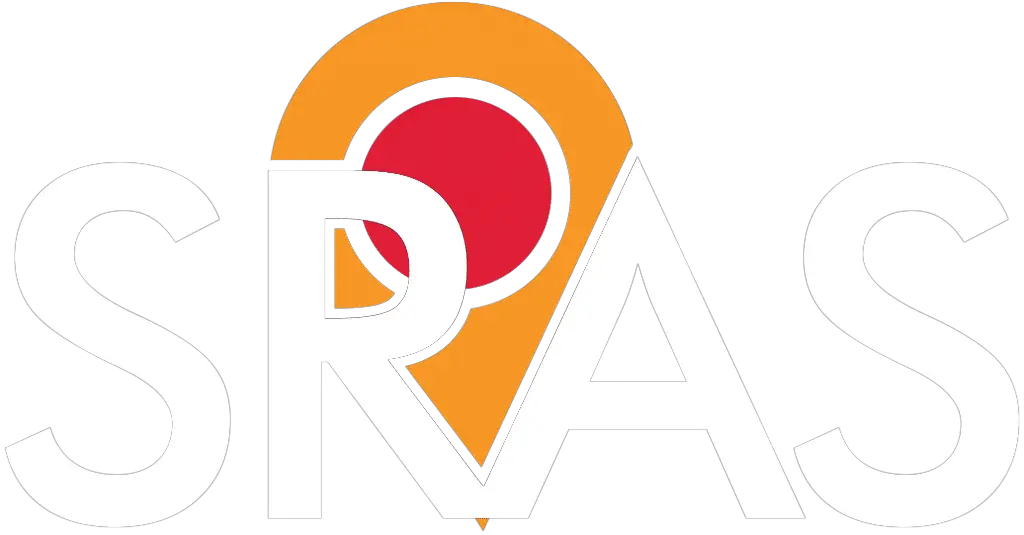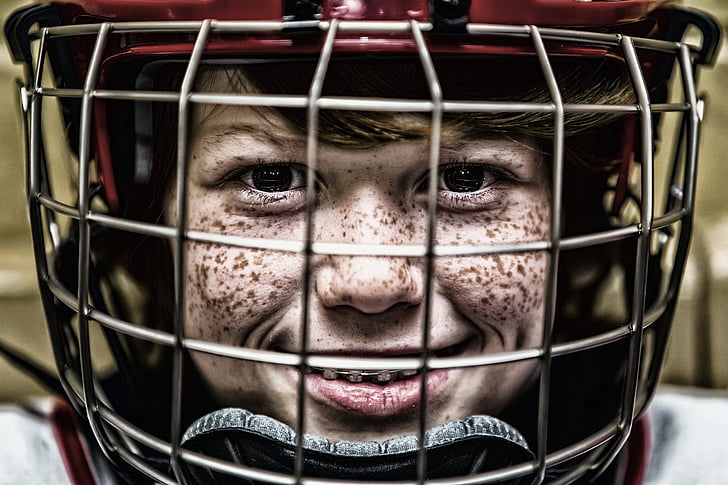Ice hockey is a sport defined by speed, impact, and precision. Players must aggressively fight for position at breakneck pace in a game as physically punishing as it is technically demanding. Injuries are an unfortunate but expected part of the sport, and no position is more vulnerable than that of the goaltender. Tasked with stopping unforgiving black disks flying at speeds exceeding 100 miles per hour, goalies must regularly place themselves in the direct path of danger. Unsurprisingly, their protective gear, and especially the mask, has been a focal point for innovation. The evolution of the mask has had to focus not only on protecting the player, but also in making it comfortable to wear, providing the goalie with proper vision, and overcoming fears that wearing a mask would somehow appear “weak.”
Repurposed and Early Custom Masks
Long before the modern goalie mask became standard, players experimented with makeshift solutions. As early as 1899, various forms of facial protection from catcher’s masks, fencing gear, lacrosse masks, and football faceguards were occasionally pressed into service in practices (“The Odd History of Goalie Masks”).
In 1927, Elizabeth Graham of Queen’s University became the first recorded goaltender to wear a mask in an organized game, choosing a fencing mask to shield her teeth. The first instance of facial protection in an NHL game was Clint Benedict wearing a leather face pad to protect his broken nose and cheekbone in 1930. Once healed, however, he ambondoned the mask, underscoring how temporary and stigmatized such equipment still was (Freeborn). Headwear modeled after jockey helmets were proposed for use in the National Hockey League in 1933, but proved ineffective, unpopular, and seldom used outside of practices. Players complained that the masks were uncomfortable or that they blocked too much of their field of vision, interfering with their ability to see and stop the puck. Further, team owners and coaches still feared that goalies wearing masks appeared “weak” and thus discouraged their use to preserve the team’s image.
As hockey evolved professionally, it got faster and more aggressive, and the need for more protective gear soon became obvious. Still, early hockey equipment manufacturers largely focused on pads and sticks, while helmets and face masks remained rare and underdeveloped (Nothen, Kidd). Nevertheless, individual players continued to test out face protection in specific circumstances. At the 1936 Winter Olympics, for instance, Japanese goaltender Teiji Honma wore a baseball-style catcher’s mask—primarily to protect his eyeglasses (Freeborn).
Innovation continued quietly through the 1940s. George Edward Crane, a team doctor at Brown University, designed a transparent plastic face guard that allowed for a greater field of vision while shielding the face. However, the mask failed to gain traction: it offered no protection for the eyes and remained acceptable only for practice sessions or emergency use to protect healing injuries.
The 1950s saw a modest leap forward with the development of the “Louch” mask. Created by Delbert Louch, this face shield—made from transparent plastic and padded for comfort—was adopted in practices and short-term scenarios (“The Odd History of Goalie Masks”). Still, it had serious drawbacks: the mask left the forehead unprotected, and players frequently complained that their breath fogged up the plastic, impairing vision (Stubbs). Like earlier designs, the Louch mask marked progress, but not a breakthrough.
Growing Acceptance and Better Designs
A turning point in the history of goaltender protection came with Jacques Plante of the Montreal Canadiens, who defied taboo and the discouragement of his team’s administrators to become the first professional goalie to wear a mask consistently during games. (Bachynski). After taking one too many pucks to the face and breaking his nose several times, Plante insisted on the mask. He would revolutionize the game.
Plante originally tried the Louch mask. However, during the 1958 Stanley Cup Playoffs, Bill Burchmore of Canada Fiberglass Ldt. witnessed Plante take a painful puck to the face. He offered to use his design skills and his company’s product to give Plante something better. The result was a sleek, lightweight fiberglass mask just three-sixteenths of an inch thick and weighing about a pound. Molded from the face of Burchmore’s colleague Al McKinney, the mask offered wide eye openings for improved vision, a mouth hole for easy breathing, and internal padding for comfort and stability. For the first time, a design successfully addressed most of the criticisms previously leveled against goalie masks. This became known as the “standard” mask, and Plante began using it in games (Stubbs).
When questioned about it, Plante told the New York Times, “I am the best goalie in the league, and with the mask I am even better” (qtd. in Bachinsky). His confidence seemed well placed: after adopting the mask, Plante went undefeated in his next eighteen games (“The Odd History of Goalie Masks”). Nonetheless, skepticism persisted, and the stigma around masks did not vanish overnight. Still, the seed had been planted.
Soon, two more major designs emerged. First, Burchmore followed his original design with a second-generation mask constructed from fiberglass yarn contoured to the goalie’s face. The result was a better-fitting mask with better airflow due to the resulting holes. The design allowed better airflow and a more precise fit. Nicknamed the “pretzel mask,” it had a twisting, open structure, with the yarn rounding the eyes and cascading to the ends of the mouth (“The Odd History of Goalie Masks”). The second major design came from Red Wings’ trainer Lefty Wilson, made for team goaltender Terry Sawchuk. Making its debut in 1962, it was made of slightly molded fiberglass sheets with wide cutouts for the eyes and slits for ventilation (“Evolution of the Goalie Mask”). Wilson’s mask prioritized a sleeker profile and more stylized appearance, combining function with aesthetic appeal for the first time. It became known as the “flatter” mask, as the pretzel mask was quite thick.
Notably, Detroit Red Wings manager Jack Adams became the first known team executive to actively promote mask use, stating that he was tired of seeing his star goalie injured. This shift in institutional attitudes marked an important step in the broader acceptance of facial protection.
These masks, along with variations and combinations of their designs, become increasingly common and accepted. With Sawchuk donning the mask in games not long after Plante did, the goaltender mask “finally started to become a mainstay in the hockey world” (“The Odd History of Goalie Masks”). Soon, other major trailblazers appeared including Ken Dryden, goaltender for the Montreal Canadiens, who wore a Burchmore creation that mixed the standard and pretzel designs throughout his late 60s college career, and for some of his 1970s career in the NHL (“The Odd History of Goalie Masks”). Internationally famous Czech goalie Jiří Holeček and Bruins’ Star Bernie Parent became known for their early adoption of pretzel masks, helping to normalize its use at the highest levels of the sport.
Towards the Modern Hockey Mask
As acceptance grew, goaltenders experimented with designs, becoming connoisseurs. A next major innovation came from Ernie Higgins, who designed the fiberglass “face-hugging” mask for his son Neil, a goalie for the Charlotte Checkers in the 1970s. This updated, rounder design extended the standard fiberglass mask to provide greater coverage—reaching the hairline, under the chin, and around the ears (“The Odd History of Goalie Masks”). Its key advancement was in fit: the interior “hugged” the contours of the face, greatly reducing movement during play, an issue that had plagued earlier models.
Boston Bruins goalies Eddie Johnston and Gerry Cheevers were early adopters of Higgins’ innovation. After Johnston suffered a concussion, Higgins extended the mask further to the top of the head and past the ears. He also added strategic padding at the forehead and cheekbones, increasing both comfort and impact absorption (“Evolution of the Goalie Mask”). This new generation of mask became standard at all levels of competitive hockey.
Despite these advancements, significant vulnerabilities remained. The areas around the eyes, temples, and back of the head were still largely unprotected (Asplund et al.). In response, European designers in the 1970s introduced a new approach: the “helmet-cage combo.” This system combined a conventional player’s helmet with a thick wired cage affixed to the front, offering full facial coverage (“The Odd History of Goalie Masks”). Russian goaltending icon Vladislav Tretiak helped bring this design into the international spotlight during the 1972 Summit Series, where his use of the helmet-cage combo made a strong impression on North American audiences.
With more space between the wires and the face, cages allowed for protection, comfort, and considerable range vision. However, it was also bulky, shifted during play, and had poor shock absorption. Aesthetically, it lacked the streamlined appeal of the fiberglass masks, and some dismissed it as “amateurish.”
Seeking to combine the strengths of both systems, Edmonton Oilers goaltender Dave Dryden collaborated with designer Greg Harrison in 1977 to create a hybrid solution. They cut a rectangular hole in a traditional face-hugging mask and inserted a wired cage, fusing the close fit and structural integrity of fiberglass with the range of vision and safety of the cage (Freeborn; “The Odd History of Goalie Masks”). This innovation marked the birth of the modern “combination” mask, now standard across professional and amateur hockey.
The helmet-cage combo and modern combo masks rapidly gained popularity. Meanwhile, Higgins’ face-hugging design also remained in use until the late 1980s. The face-hugging mask also took on a pop-cultural life of its own after being featured in the 1980’s Friday the 13th horror movie series. Here, pop-culture icon Jason Voorhees incontrovertibly dispelled any notion that the hockey mask was “weak,” turning it into a symbol of power, strength, and even fear.
Acceptance, Protection, and Self Expression
As the goaltender’s mask became widely accepted, it also emerged as a canvas for personal expression. In the 1970s, Boston Bruins goalie Gerry Cheevers unintentionally started a new tradition. During a practice, his coach drew stitches on his mask to mark where a puck had struck. Cheevers continued the ritual, adding new “stitches” each time he was hit during a game. This mask became one of the earliest decorated masks in professional hockey (“The Odd History of Goalie Masks”).
Since then, mask artwork has become a widespread and celebrated practice. Goaltenders use their masks to display team loyalty, personal beliefs, lucky symbols, or unique motifs. Curtis Joseph, nicknamed “CuJo,” famously had his masks painted with snarling images of Stephen King’s fictional dog, Cujo. Others push the boundaries of design and technology—Tampa Bay Lightning goalie Andrei Vasilevskiy, for example, wears a mask that changes color when wet (Borzi). The saying “look good, feel good, play good” has gained traction among goaltenders, reflecting the pride many now take in their protective gear.
While design aesthetics have flourished, advances in sports science have also shaped the evolution of goalie masks. In recent years, research has shown that most modern masks, regardless of brand or model, offer comparable levels of protection. However, subtle differences remain, most often related to the placement of internal padding or the shape and configuration of external ridges, which affect how impact forces are dispersed. Notably, recent studies suggest that lateral impacts—particularly to the sides of the head—pose a greater risk of concussion than frontal impacts, highlighting a key area for future innovation (Nur et al.; Clark et al.).
The game of ice hockey is always changing, evolving, and gaining skill and speed. The goaltender’s mask has evolved as well, providing greater comfort and wider fields of vision to allow the goaltender to do their job while providing the protection they need to keep them safe. Masks have also come a long way from being taboo to being ways that goaltenders take pride in and use to express themselves in innovative and personal ways. With more advanced studies, the mask will continue to better serve players in its much-needed purpose.
Works Cited
Asplund, C., et al. “Facial Protection and Head Injuries in Ice Hockey: A Systematic Review.” British Journal of Sports Medicine, vol. 43, no. 13, 2009, pp. 993–99, Web.
Bachynski, Kathleen E. “Too Rough for Bare Heads: The Adoption of Helmets and Masks in North American Ice Hockey, 1959–79.” Sport History Review, vol. 51, no. 1, 2020, pp. 25–45, Web.
Borzi, Pat, et al. “For Many Goalies, It’s Not a Mask. It’s an Identity.” New York Times, vol. 166, no. 57597, 14 May 2017, p. 5. EBSCOhost, Web.
Clark, J.Michio, et al. “Distribution of Brain Strain in the Cerebrum for Laboratory Impacts to Ice Hockey Goaltender Masks.” Journal of Biomechanical Engineering, vol. 140, no. 12, Dec. 2018, pp. 1–10. EBSCOhost, Web.
Freeborn, Jeremy. “Goaltender Masks.” The Canadian Encyclopedia, 26 February 2021. Web.
Nothen, Guilherme, and Bruce Kidd. “Estranged: Notes on the Historical Development of the Relationship between Players and Manufacturers of Ice Hockey Equipment in Canada.” International Journal of the History of Sport, vol. 39, no. 1, 2022, pp. 72–91, Web.
Nur, Sarah, et al. “A Comparison of the Capacity of Ice Hockey Goaltender Masks for the Protection from Puck Impacts.” Sports Biomechanics, vol. 14, no. 4, 2015, pp. 459–69, Web.
Stubbs, Dave. “Plante mask mold finds way to Hockey Hall of Fame.” NHL, 3 March 2019. Web.
“Evolution of the Goalie Mask.” Source for Sport, 24 January 2022. Web.
“The Odd History of Goalie Masks.” YouTube, uploaded by SportAntic, 19 October 2023, Web.
More From Vestnik
This paper is published here as part of Vestnik. See all Vestnik papers on this site here.
Vestnik was launched by SRAS in 2004 as one of the world’s first online academic journals focused on showcasing student research. We welcome and invite papers written by undergraduates, graduates, and postgraduates. Research on any subject related to the broad geographic area outlined above is accepted. This includes but is not limited to: politics, security, economics, diplomacy, identity, culture, history, demographics, language, religion, literature, and the arts. Find out more here.



